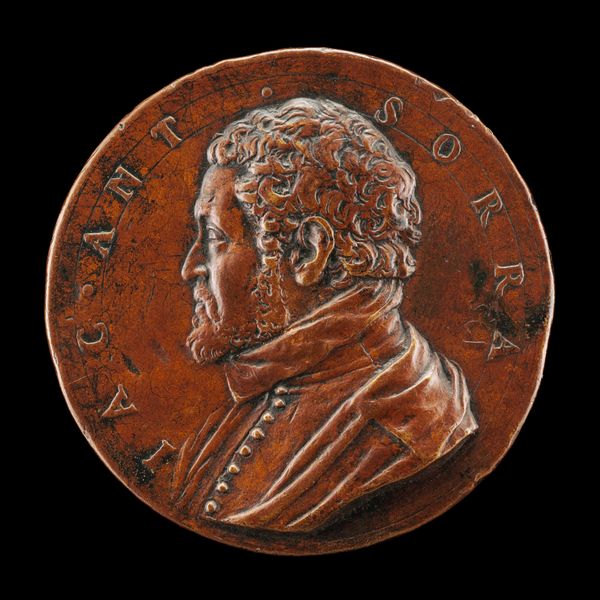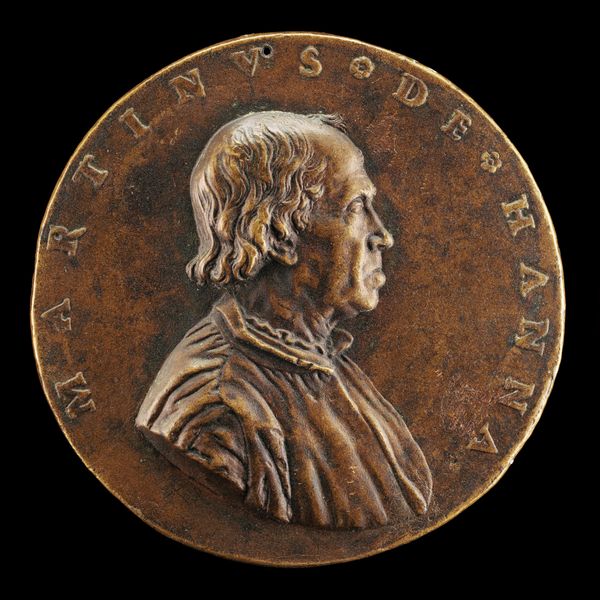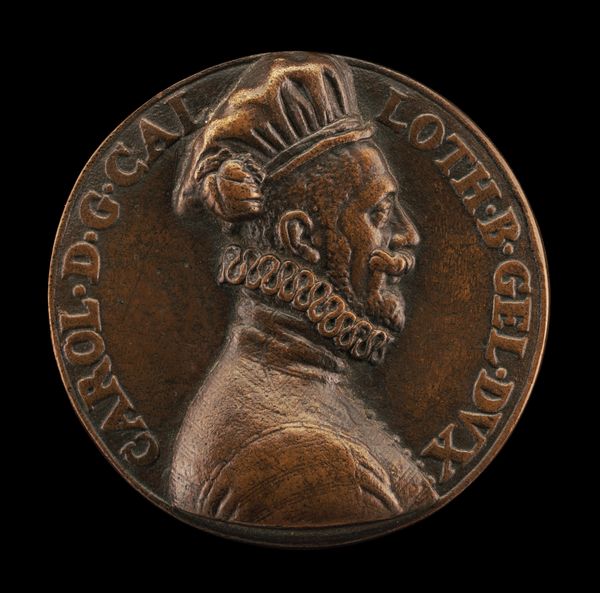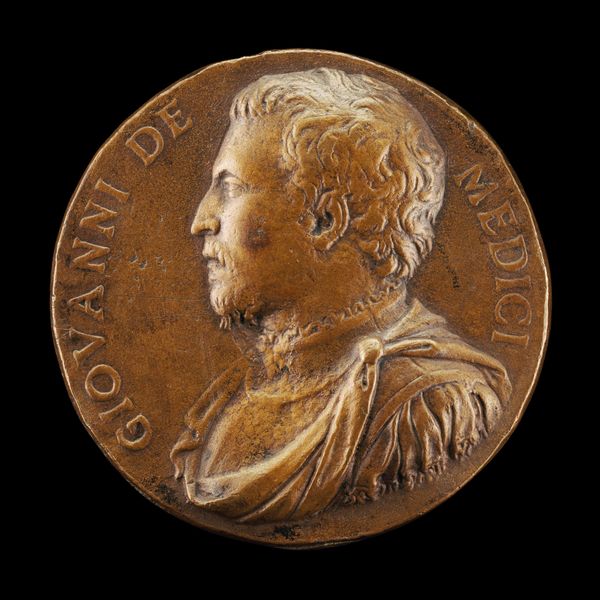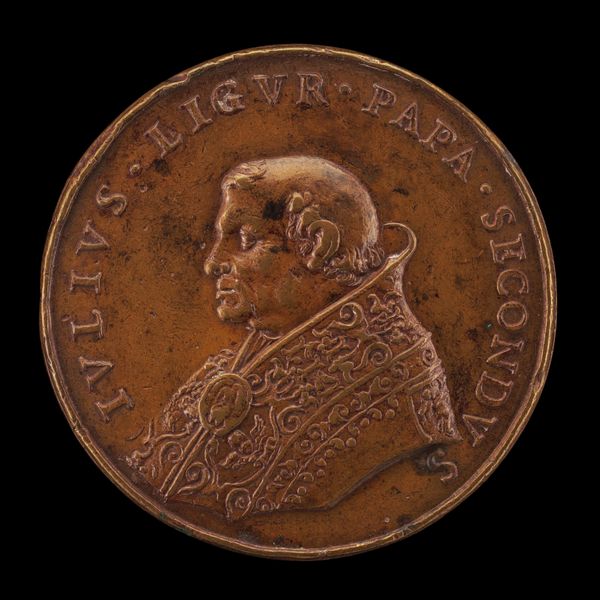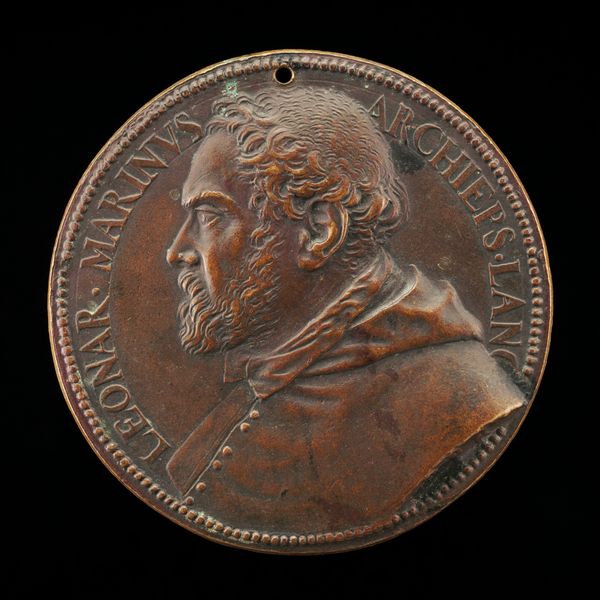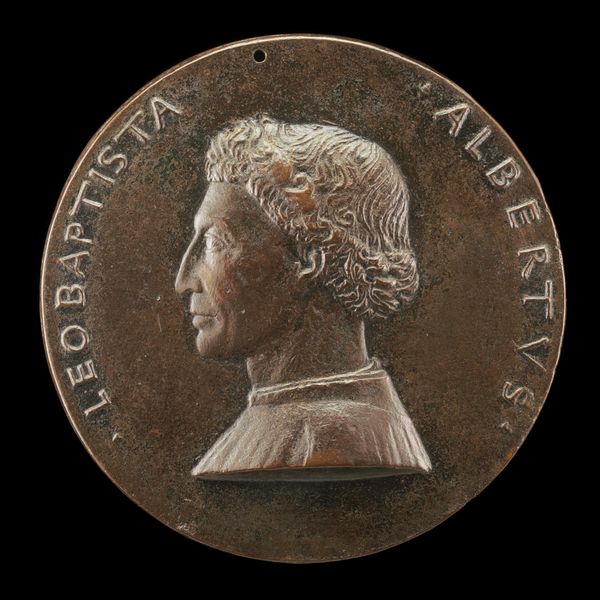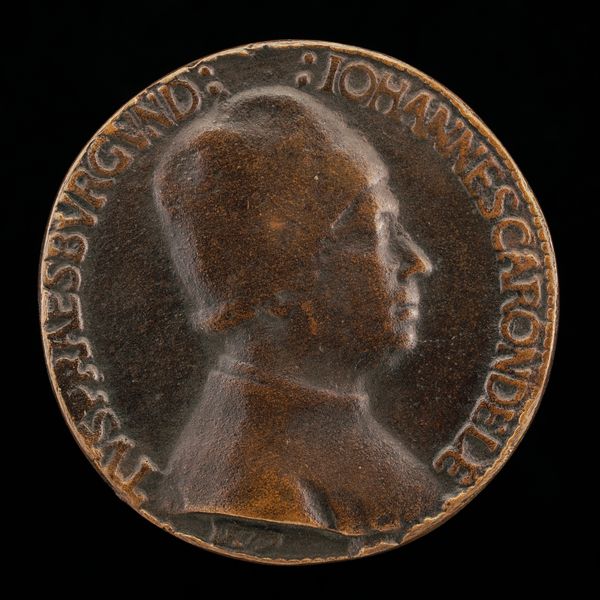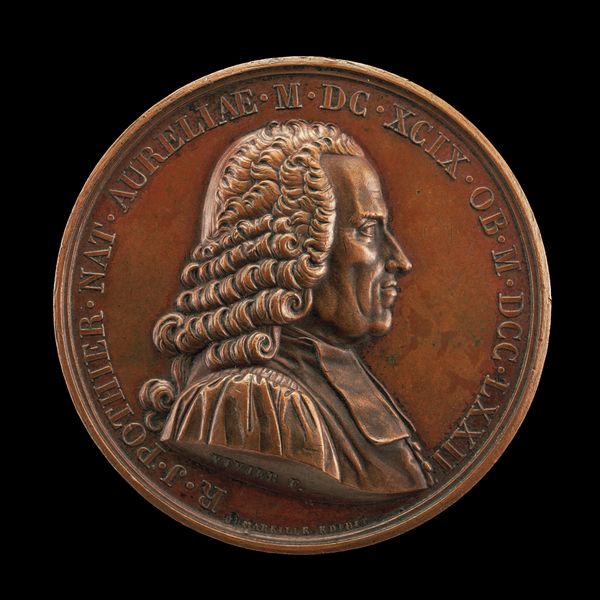![Guarino da Verona, 1374-1460, Humanist [obverse] by Matteo de' Pasti](/_next/image?url=https%3A%2F%2Fd2w8kbdekdi1gv.cloudfront.net%2FeyJidWNrZXQiOiAiYXJ0ZXJhLWltYWdlcy1idWNrZXQiLCAia2V5IjogImFydHdvcmtzL2Q4NWVhODEzLTU1NzYtNDVmMC1iZDA5LWZhZjY5ZTE5ZDdjZi9kODVlYTgxMy01NTc2LTQ1ZjAtYmQwOS1mYWY2OWUxOWQ3Y2ZfZnVsbC5qcGciLCAiZWRpdHMiOiB7InJlc2l6ZSI6IHsid2lkdGgiOiAxOTIwLCAiaGVpZ2h0IjogMTkyMCwgImZpdCI6ICJpbnNpZGUifX19&w=3840&q=75)
carving, bronze, sculpture
#
portrait
#
medal
#
carving
#
sculpture
#
bronze
#
11_renaissance
#
sculpture
#
italian-renaissance
Dimensions: overall (diameter): 9.33 cm (3 11/16 in.) gross weight: 250.02 gr (0.551 lb.) axis: 12:00
Copyright: National Gallery of Art: CC0 1.0
Editor: Here we have Matteo de' Pasti's bronze medal, "Guarino da Verona, Humanist [obverse]," from around 1446. The detail in the carving is amazing, especially the way the light catches the inscription. What do you make of this piece? Curator: I'm drawn to the material realities here. It’s bronze – a deliberate choice connecting the humanist project to classical antiquity. We see here a specific manipulation of matter: the casting process, the labour involved. It also reflects economic systems and trade routes that made such material accessible. What's being bought and sold here isn't just an image but also humanist ideals and their accessibility to those with resources. Editor: So, you're saying the value of the medal extends beyond just its artistic merit? Curator: Exactly. How were these objects consumed? Who commissioned them? Think about how the materiality of bronze contrasts with the ethereal nature of humanism. This tension reveals interesting dynamics about power, wealth, and the control of knowledge during the Renaissance. Editor: I see what you mean. The very act of creating it reinforces social structures. Did the use of bronze influence the aesthetic? Curator: Undoubtedly. The durability, the association with prestige... these all impact our understanding of Guarino's status and legacy, shaped in this solid, lasting material. Editor: That's a perspective I hadn't considered before, really focusing on the bronze itself as a conveyor of meaning. Thanks! Curator: It's crucial to remember the art object as more than just representation. Examining its materiality reveals embedded cultural and economic relationships. I appreciate you considering these angles too.
Comments
No comments
Be the first to comment and join the conversation on the ultimate creative platform.
